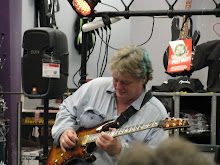Okay, onto shape and form How many shapes are the basically speaking? We have the circle, the oval, the square and the rectangle, the triangle and the trapezoid, which is like a triangle cut in half from either the bottom point or the top point, depending on how the shape is situated. We have six of them. We have also organic shapes, which are shapes with less definition, if you will. We also have the parallelogram, which is like a slanted rectangle.
Let me say here that we all ought to journal, both publicly and privately, on opinions and classical definitions. Let me say here that opinion is not so strong as accepted definition, but, as Jesus said, "Wherever two or more of you agree, it will be done." Therefore, even if it is just you and one or two others, based on the words of the Master, which is to say, Jesus, there is the potential for a new paradigm that is exclusive. "Great minds think alike," one great saying goes. BTW, a paradigm is, simply put, a school of thought. It isn't necessary for there to be more than one for a new paradigm until after one person has thought it through and authored it, then, if his ways become accepted, then it becomes a paradigm (pron. para-dime, or paradim) The "g" is silent. Onward and, hopefully, upwards.
Now that we have identified the different shapes, what are their three-dimensional counterparts? We have the sphere, which is round and related to the circle. For the oval, we have the ovoid sphere, which like an egg. There is the cube, which can be built of squares exclusively, or of rectangles, or a combination of the two. From the triangle progresses the pyramid, either three-point based or four-point. Anything beyond this wherein the trapezoid or the parallelogram are concerned, we will call anything based on them in the three-dimensional crystalline.
Three-dimensional shapes that are organic are, I believe, for the most part, are either nameable or not. It depends on what the artist is describing, and we will leave it to the individual artist to name the shape, if necessary and not self-evident.
Let me say here, we have, through deductive reasoning, actually come a long way, potentially, from the original questions on line. Next time, I think I am going to post some drawings of mine showing line(s) and the different shapes.
Subscribe to:
Post Comments (Atom)

No comments:
Post a Comment